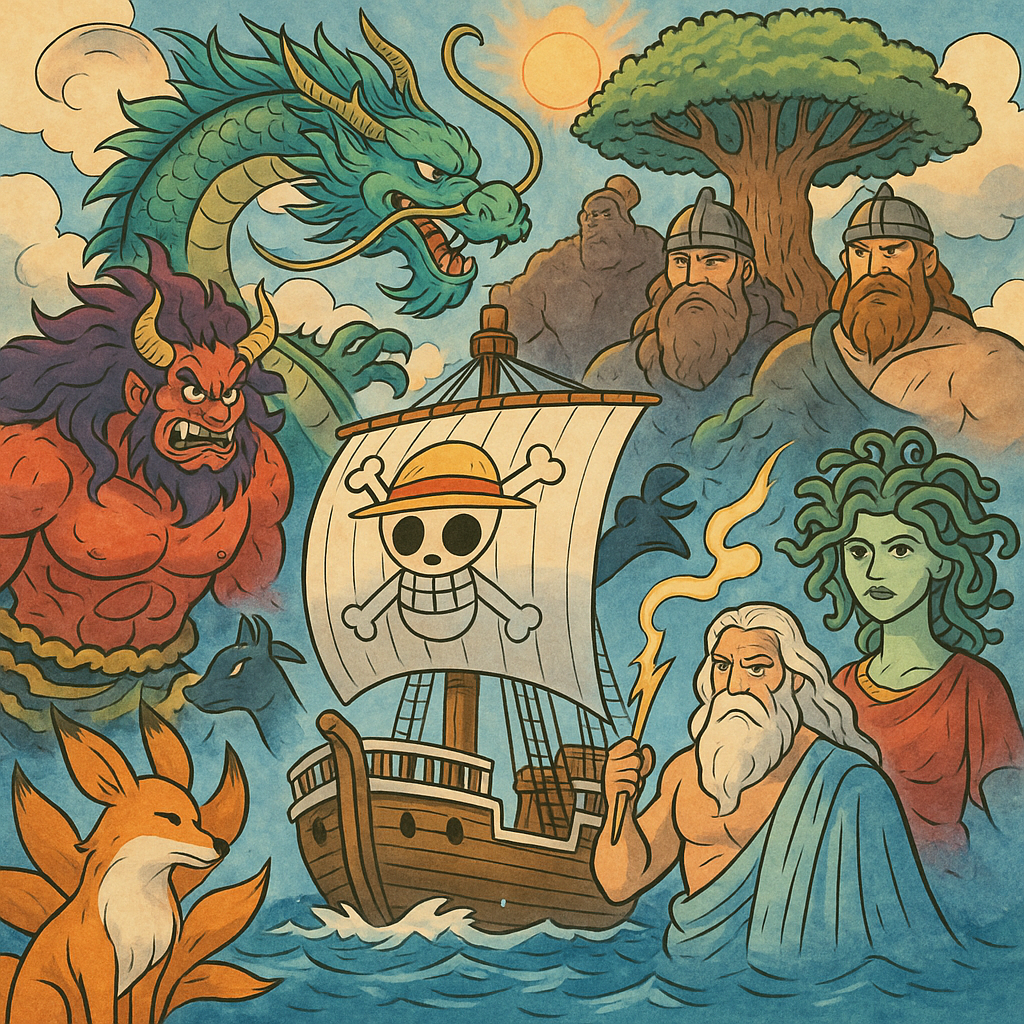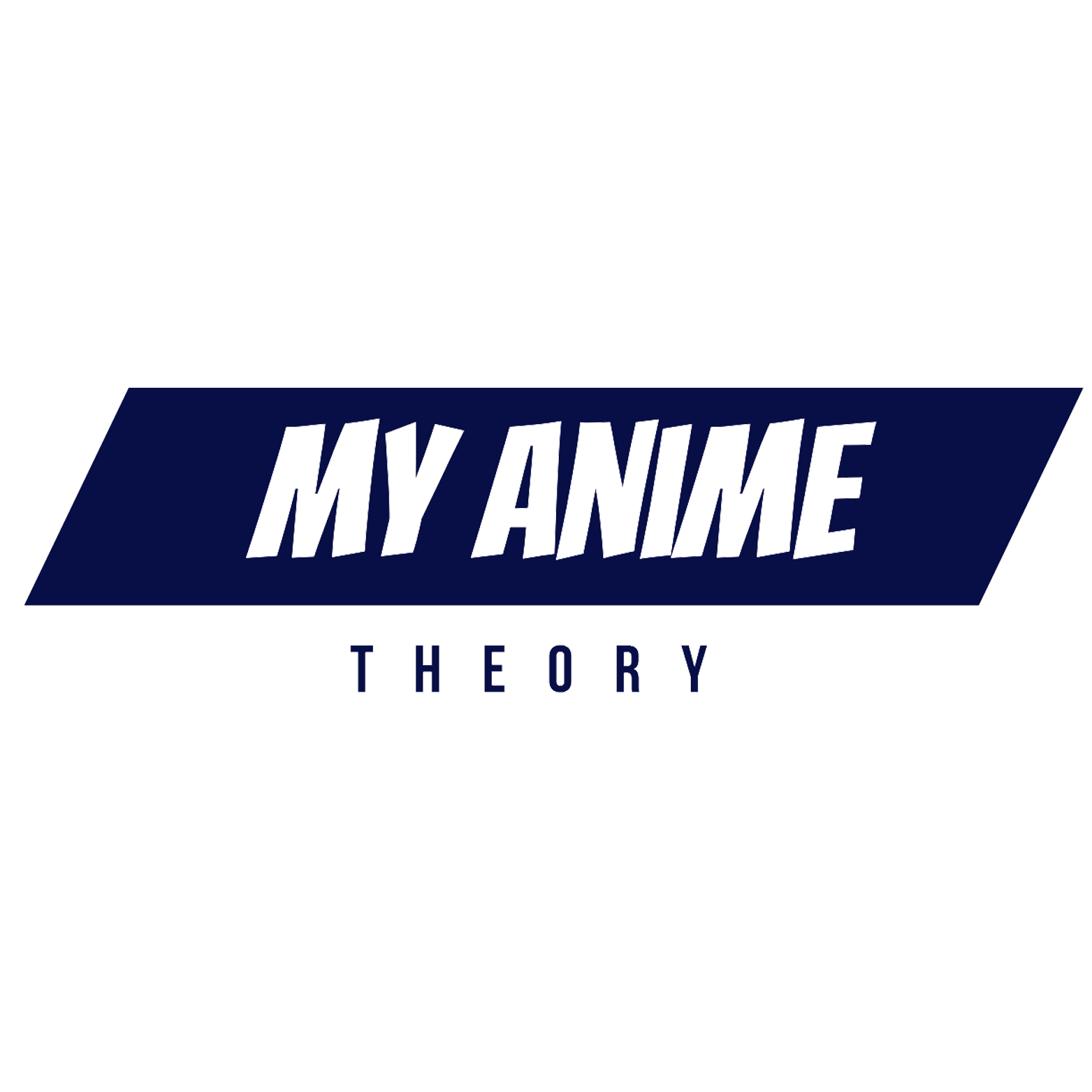Discover how One Piece draws from Japanese, Chinese, Norse, and Greek mythology to build its legendary world. Explore the mythological roots behind Kaido, Elbaf, Enel, and more.

One Piece: How Mythology Powers the World’s Greatest Pirate Adventure
Eiichiro Oda’s One Piece isn’t just a pirate story filled with devil fruits, treasure hunts, and wild adventures—it’s a rich tapestry woven with threads of mythology from cultures across the world. This fusion of folklore and fantasy is one of the reasons One Piece has captivated fans for over two decades. From ancient gods and mystical creatures to legendary battles, the series cleverly integrates mythological elements that add depth and resonance to its vast world.
Rooted in Japan: Oni, Yokai, and Spirit Lore
Unsurprisingly, Japanese mythology plays a foundational role in shaping One Piece, especially in arcs like Wano.
Take Kaido, for example. With his hulking frame, horns, and love of sake, he’s clearly inspired by the oni—the horned demons of Japanese legend. His wild nature and immense strength also parallel Shuten-Doji, one of Japan’s most infamous oni bandits. Even the character Ashura Doji (also known as Shutenmaru) pays homage to this tale.
Then there’s Onimaru, the fox who transforms into the monk-like warrior Gyukimaru. His story draws from yokai folklore, particularly the onyudo—giant monk spirits known for shapeshifting and mischief.
These touches give the Wano arc a sense of authenticity, rooting its fantastical elements in cultural tradition.
Echoes of China: Dragons and Fox Spirits
Chinese mythology also leaves a bold mark on the series, especially when it comes to mythical beasts.
Kaido’s ability to become an Azure Dragon is a direct nod to Qinglong, the dragon god of the East and one of the Four Symbols in Chinese cosmology. Momonosuke’s artificial Devil Fruit mirrors this, though with a twist—his form is pink rather than blue, symbolizing an imperfect replication.
The mystical fox spirit, often seen in Japanese tales as kitsune, also has roots in Chinese mythology through the huli jing—cunning shapeshifters with magical powers. Catarina Devon’s fox transformation taps into this shared mythos.
Norse Inspirations: Giants, Gods, and the World Tree
The island of Elbaf is a love letter to Norse mythology.
Home to towering giants who live by a warrior’s code, Elbaf feels like it was plucked from the pages of a Viking saga. One of its princes is even named Loki, echoing the trickster god from Norse legend. Like his mythological namesake, Elbaf’s Loki is rumored to have ties to chaos and destruction.
Shanks, meanwhile, invites comparisons to Tyr—the Norse god of war and justice—particularly since both are peacemakers who lose an arm in service of a greater cause.
The Sun Tree and the idea of a world tree in Elbaf also evoke Yggdrasil, the great tree connecting realms in Norse cosmology.
Greek Mythology: Thunder Gods, Titans, and Epic Struggles
Greek myth shows up in surprising and symbolic ways throughout One Piece.
Nami’s living cloud companion, Zeus, is an obvious reference to the king of the Greek gods and his command over lightning. Enel, the self-proclaimed god of Skypiea, also channels Zeus with his electric powers and divine ego.
Then there are the Blackbeard Pirates. Their “Titanic Captains” seem to mirror the ancient Titans, primordial beings who once challenged the gods of Olympus. Sanjuan Wolf, with his monstrous size, is a dead ringer for a Gigantes, the giants of Greek myth who fought the Olympians during the Gigantomachy.
The ongoing battle between Blackbeard’s crew and the World Government echoes the eternal clash between rebellious titans and ruling gods—a timeless theme of power, rebellion, and destiny.
Other Legendary Touches
Oda doesn’t stop at the major mythologies—he sprinkles references from across the legendary spectrum.
From the Minotaur-inspired Minotaurus in Impel Down to Medusa-like powers in Boa Hancock’s Mero Mero no Mi, and even weapon names like Gungnir (Odin’s spear), the world of One Piece is packed with nods to ancient lore.
This clever blend of history, mythology, and high-seas fantasy helps make the world feel bigger, older, and more magical.
Why It All Works
What sets One Piece apart is how naturally these mythological references are embedded in the story. They’re not just name-drops or cosmetic—they inform character designs, motivations, and entire plotlines. They make the world feel alive, connected, and timeless.
Oda doesn’t just borrow from myth—he transforms it, shaping it into something fresh and uniquely One Piece. That’s part of why this series isn’t just popular—it’s legendary.





